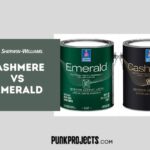Do you have a primer that needs to be painted and How Long Can You Leave Primer Unpainted? Wondering if it’s okay to leave primer unpainted for some time? Don’t worry, you’ve come to the right place.
We’ll tell you everything you need to know about how long you can leave primer unpainted. So don’t wait, read on and get answers to all your queries!
How Long Can You Leave Primer Unpainted?
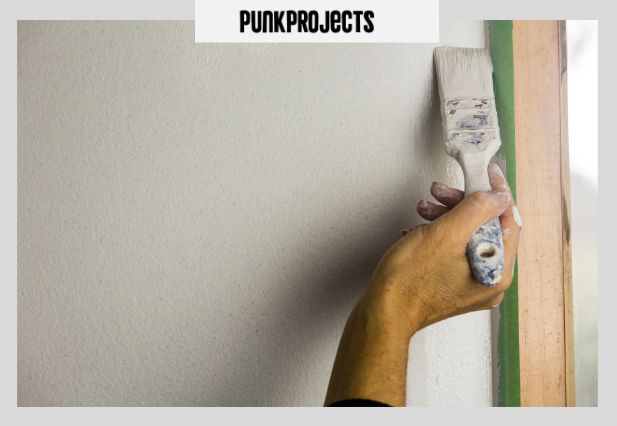
Primer is an important step when preparing a surface for painting, especially if the surface has never been painted before or if the existing paint coat is in poor condition. Primers are designed to help protect and preserve surfaces, as well as give a lasting foundation for paint to adhere to.
Depending on surface type and quality of primer used, it can be left unpainted for long periods of time without compromising the underlying material.
Primers can take anywhere from 30 minutes up to 24 hours before they’re dry and ready for paint.
Generally speaking, oil-based primers need about 8 hours of drying time for every coat that’s applied, while latex primers usually take 2-4 hours per coat.
Water-based primers may require less time in between coats, such as 1 hour or even less depending on the temperature and humidity of your environment.
When buying primer, pay attention to the manufacturer’s directions on how long it should be allowed to dry before painting over it with latex or oil paints. The drying times vary based on product type and other factors like temperature or ventilation in your work space. Take note of any additional information provided by the manufacturer when selecting which primer works best for your project.
How long do you wait between primer coats?
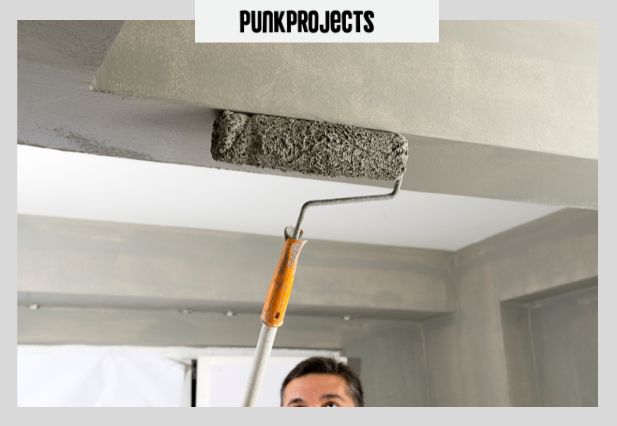
When priming a surface before painting, the recommendation is to wait up to 24 hours between each coat of primer in order to get the best results. This delay between coats enables the primer to bind properly with earlier layers so that the final paint job has maximum adhesion and durability.
It’s important to keep in mind that environmental factors can impact drying times such as humidity levels, temperature and air circulation, so allowing more time between coats is recommended if these conditions are not perfect.
Which is the fast drying primer?
When it comes to painting projects, using the right kind of primer is essential. Primers are used to improve adhesion and prevent paint from flaking off over time.
There are many different types of primers available, but not all of them will offer a fast drying option. In this article, we’ll be looking at which type of primer offers the fastest drying times so you can make an informed decision for your next painting project.
Bulls Eye 1-2-3 Water-Based Stain Blocking Primer/Sealer
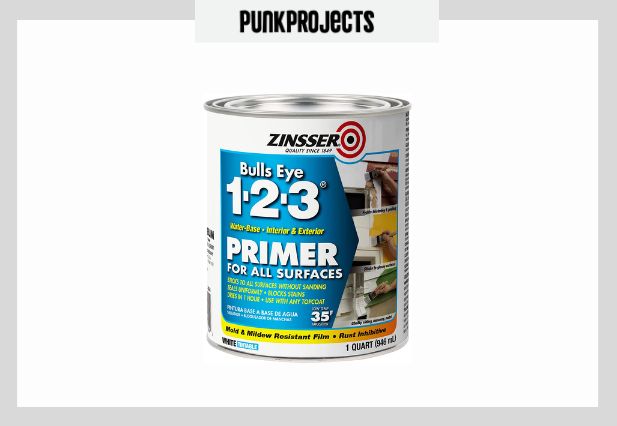
Rust-Oleum is well known for its protective paints and coatings. Its Zinsser Bulls Eye 1-2-3 Water-Base Primer is an all-purpose primer/sealer that sticks well to numerous surfaces and works with any top coat. The corporation is known as the top manufacturer among the rust-prevention paints available. Dries to the touch in 35 minutes, ready to topcoat in 1 hour, covers up between 87 and 112 square feet per quart.
KILZ 3 Premium Primer
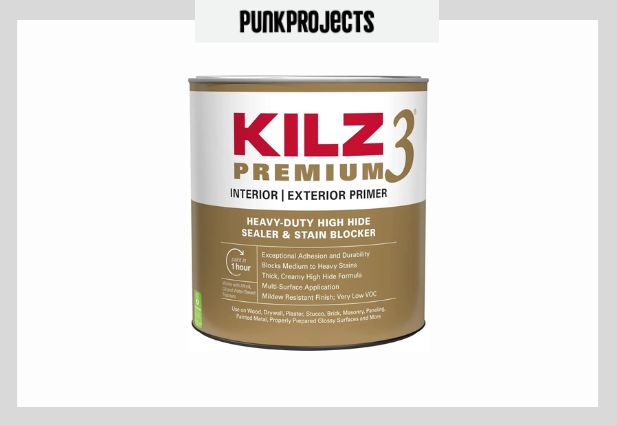
Kilz is a renowned paint manufacturer, particularly for interior primers. Kilz Original Interior Primer is the company ’s flagship primer designed to deal with most heavy marks for walls, wood, paneling, drywall, plaster, wallpaper, masonry, brick, and painted metal. It also expertly works on shiny surfaces.
It feels like I’m painting with glue. That is the recipe for applying one coat primer. However, keep in mind that it will dry quickly, so paint and saturate smoothly, and be aware that you will not ruin your brush by washing it up as soon as you’re done.
How should I prepare my wall for primer?
Before you apply primer, it’s very important to prepare your walls properly. Start by using a vacuum to remove any dust and debris that has built-up on the wall over time. Then use a damp cloth to wipe down the wall and remove any remaining dirt or dust. To ensure long-lasting results, use an acrylic cleaner or a mild solution of detergent and warm water if needed.
Once your wall is completely clean, you can apply any necessary spackling for small holes in the wall or sandpaper to smooth rough edges. Once these tasks are complete, you will need to let the wall completely dry for several hours before applying primer. It’s also important to make sure there are no loose paint chips or pieces of debris on the walls before applying primer.
How should I prepare my wall for primer?
When it comes to painting a surface, one of the most important steps to take is using a primer before applying paint. Primer serves two main purposes. Firstly, it helps to cover up any unwanted color or grain on a wall, while also preventing the paint from being soaked into the material you are trying to paint. This can help ensure that the color of your finalized project looks exactly as you had hoped and make it more durable in the long run.
When deciding if you need to use primer on any particular surface, there are several factors that should be taken into consideration. These include:
- The type of material being coated – different surfaces have different needs when it comes to priming and some require specific primers for best results
- The finish of the material – if you are covering up a glossy finish, an additional primer layer may be needed due to its slick nature
- Any unevenness in the wall – areas with high levels of bumps, cracks or ridges may need additional preparation steps before applying paint
- Color changes – switching from light colors to darker colors requires added coverage in order for them not instead mix together
- Previous paints or stains – if there has been any prior application of paints or stains on a surface, extra care must be taken in order for them not instead mix together and ruin your final project
In general, it is recommended that at least one layer of primer is used before adding paint; however this number can increase depending upon certain factors mentioned above.
Are paint-and-primer combinations worth it?
Using a combination paint and primer can save time when painting large projects, but are they always worth the extra money invested? Primers are designed to form a bond between the top coat (paint) and the surface you’re painting. A separate primer should be applied any time you’re painting over non-porous surfaces like metal or plastic, or if you want to change the color of a wall that was previously painted.
In most cases, combined paint and primer can usually cover dark surfaces with just one coat if you use a high quality product. Anytime the color coverage is uncertain, it’s best to start with a coat of primer. It will help ensure an even finish with fewer coats of paint needed. While quick dry primers are available for your convenience, some may not offer as strong of an adhesive bond between the surface and topcoat.
Is Primer Really Necessary?
Primer is a preparatory coating applied to a surface before painting. It helps the paint adhere better and improves the durability of the finish. Depending on what type of primer you use, it may also protect against water, heat and secure fasteners.
Primers should always be used when painting new surfaces, especially porous materials such as wood and drywall. Primer seals these surfaces and gives the paint something to adhere to. Using one layer of primer may significantly reduce the number of coats needed to cover the surface completely.
How long can you leave drywall unpainted
The amount of time you can leave newly installed drywall unpainted depends on a number of factors, including the type of drywall and the temperature and humidity in your home. Recommended waiting periods are between one week and three months before painting.
In optimal conditions, with no stress or moisture exposure, newer types of drywall can be primed up to three weeks after being hung. For standard drywall with lower moisture barrier properties, waiting over 30 days before priming is recommended. Higher quality drywall with enhanced moisture resistant properties should wait only 7 days before priming in optimal conditions; however, 30 days is the recommended time frame even under ideal environmental conditions.
How long can you leave primer unpainted outside
Understanding how long you can leave primer unpainted outside is important for getting the best results when priming surfaces. Primer is an essential step in the painting process, as it helps create an even, durable base coat that ensures coverage and adhesion of your final paint color.
In most cases, primer applied outdoors should not go unpainted for longer than 72 hours after application. Many is painted only 8 hours after application in order to maximize adhesion and protection from the elements. It is always a good idea to check your particular primer manufacturer’s instructions before leaving any areas unprotected for more than a few days at most.
is primer waterproof
The short answer is no, primer is not waterproof. Primer acts as a sealant to block out moisture from penetrating the surface of your walls and can even protect against mildew, mold and algae growth if applied correctly.
However, it does not provide complete protection against water. When exposed to rain or large amounts of moisture over an extended period of time, primer can start to break down and deteriorate.
How long can primer stay on before painting?
Primer is generally designed to remain on the surface for three days or less, so generally it is advisable to paint within this timeframe.
The length of time before topcoats should be applied can vary depending on the type of primer that has been used, since some primers are slow drying and will require longer times between coats.
The primer should also be fully dry before applying the topcoat, which you can test by pressing a piece of tape firmly against the area and then removing it suddenly. If any of the primer sticks to the tape its likely not ready to be painted.
What happens if I leave primer unpainted?
Primer is an important step when painting any surface, as it helps the paint adhere and provides a more uniform color. However, if you have already applied the primer, it must be painted over within a certain timeframe in order to ensure that maximum adhesion and performance is achieved. If you leave primer unpainted, you risk it becoming weak and brittle or forming a non-stick layer that makes paint hard to apply.
The best way to ensure the best results from your painting project is to always paint over primed surfaces as soon as possible; in general all primers should be finished with one or two coats of paint within three months from their original application. If more time than this has elapsed it is recommended that you either reprime or check areas with adhesion failure before proceeding with painting.
Can I wait a week to paint after priming?
Primer should be painted with a top coat of paint as soon as possible, preferably within 24 hours. After this time, there is a risk of the primer drying out and losing its adhesion qualities. The longer you wait to put a topcoat on your primer, the more challenging it will be to ensure proper adhesion.
Ideally, you want to paint the surface with a top coat before any dirt or dust accumulates on the primer and causes issues of premature failure down the line. Make sure that you clean the primed surface before painting to remove any dirt or dust particles that may have built up while you were waiting to paint.
I am a multi-talented designer and contractor with over 10 years of experience in the field. I have a passion for creating beautiful, innovative spaces that reflect my clients’ needs and styles. My skills include architectural design, interior design, space planning, project management and construction supervision.


